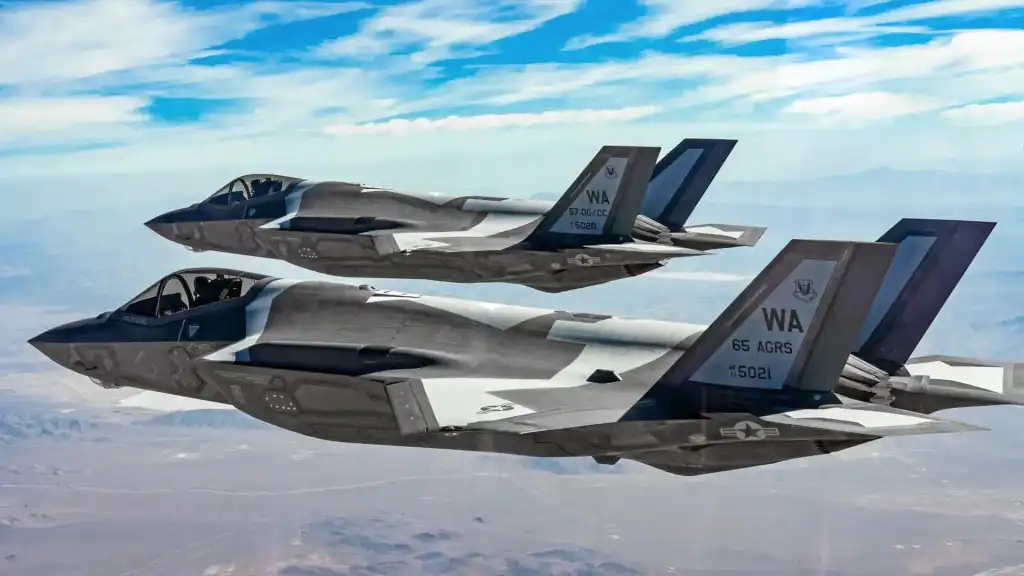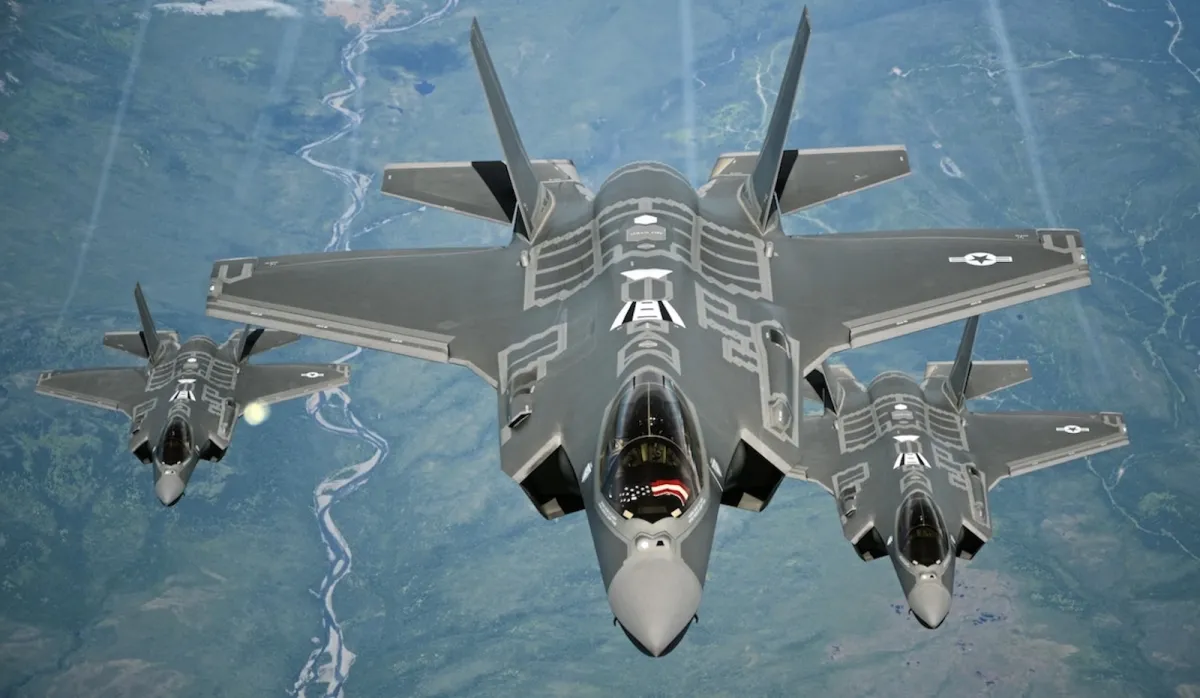𝙐𝙎 𝙃𝙤𝙡𝙙𝙨 1𝙨𝙩 𝙀𝙫𝙚𝙧 𝙁-35 𝘾𝙧𝙤𝙨𝙨-𝙎𝙚𝙧𝙫𝙞𝙘𝙚 𝙈𝙖𝙞𝙣𝙩𝙚𝙣𝙖𝙣𝙘𝙚 𝙒𝙞𝙩𝙝 𝙉𝙤𝙧𝙬𝙖𝙮 – 𝘼 𝙈𝙤𝙫𝙚 𝙏𝙝𝙖𝙩 𝘾𝙤𝙪𝙡𝙙 𝙒𝙤𝙧𝙧𝙮 𝙍𝙪𝙨𝙨𝙞𝙖, 𝘾𝙝𝙞𝙣𝙖?
The United States and Royal Norwegian Air Forces have successfully conducted the first-ever unsupervised F-35 Lightning II cross-service operation, marking a significant milestone in fighter aircraft interoperability.
The operation, which took place on April 8, 2024, saw Norwegian aircraft maintainers servicing two US fighter jets at Ørland Air Station in Norway, a development announced by the US Air Forces in Europe and Air Forces Africa on April 22.
The two F-35s, belonging to the 48th Fighter Wing at Royal Air Force Lakenheath, undertook the journey from the United Kingdom to Ørland Air Station, where they were received, refueled, and relaunched by a maintenance crew from the Royal Norwegian Air Force’s (RoNAF) 132nd Air Wing.
Following two days of operations at the Norwegian base, supported by local maintainers, the US aircraft returned to RAF Lakenheath.
General James B. Hecker, commander of US Air Forces in Europe-Air Forces Africa and NATO Allied Air Command, stated, “Operations like these showcase increased F-35 interoperability in Europe.”

F-35 Lightning II – Lockheed Martin
Hecker highlighted the importance of cross-servicing agreements. Such agreements enable nations to utilize foreign airfields and maintenance resources, thereby expanding capabilities beyond borders.
He reiterated the ultimate goal of seamless integration, envisioning any F-35 being able to land at any F-35 base, undergo necessary maintenance, and swiftly return to action.
The collaboration between the US and Norwegian air forces builds upon years of partnership and investment in the F-35 program.
The service said that since the arrival of the first Norwegian F-35s at Ørland Air Station in 2017, the 132nd Air Wing has expanded its capabilities and now operates two squadrons of F-35s at the installation.
The USAFE/AFAFRICA pointed out that joint training initiatives between the US 48th Fighter Wing and Norwegian counterparts began in January 2022, laying the groundwork for cross-servicing operations.
Colonel Martin Tesli, base commander for the 132nd Wing, expressed pride in the progress achieved. “We are proud that the progression in the F-35 program has come so far that we can use each other’s capacities in this way,” he said.
Tesli highlighted the enhanced opportunities for cooperation in training and operations facilitated by such collaboration, noting the increased flexibility in joint endeavors.
Interoperability Is Key To F-35A Combat Success
Maj Justin “Spike” Lennon, a pilot from the 493rd Fighter Squadron who took part in the event, noted how the capability to merge maintenance and operational capacities with NATO Allies provided significant flexibility for F-35 operations.
With 12 NATO nations either currently operating F-35s or having them on order, the F-35 Lightning II is proving to be more than just a stealth aircraft; it’s becoming a linchpin for enhanced interoperability and collective defense efforts across Europe and beyond.
Public perception often focuses on the F-35’s stealth capabilities, which indeed make it a formidable asset against advanced anti-aircraft systems. However, its significance goes beyond mere survivability and lethality. The aircraft’s ability to share real-time data with other F-35s and legacy aircraft is revolutionizing modern air-strike operations.
Equipped with advanced onboard systems, the F-35 can geo-locate targets day or night, even in adverse weather conditions. It can then share this critical threat information with other aircraft while maintaining its stealth profile. This capability allows pilots to penetrate advanced threats more effectively, neutralizing critical assets with precision.
A previous study by the think tank RAND Corporation, commissioned by the US European Command, underscores the importance of F-35 interoperability in Europe’s collective defense.
 Image: US Air Force
Image: US Air Force
The study highlights how the introduction of fifth-generation aircraft, including the F-35, enhances deterrence and provides commanders with vital combat power and flexibility in potential conflicts.
NATO members are increasingly recognizing the F-35’s unique ability to provide situational awareness in highly contested environments. The aircraft’s role in binding the United States and its European allies together, whether in peace, competition, or conflict, is deemed critical for years to come.
Meanwhile, in the Indo-Pacific region, where China’s assertive actions challenge regional stability, the F-35 is also playing a pivotal role.
Through regular exercises with allies such as Australia, South Korea, and Japan—all operating the F-35—the US is bolstering regional security and countering Beijing’s territorial ambitions.
Should tensions escalate, particularly over Taiwan or the Philipines, the capability for F-35 cross-service operations among allies would provide a crucial advantage.
Overall, the F-35’s versatility and interoperability make it a cornerstone of joint efforts to uphold international norms and deter potential aggression.